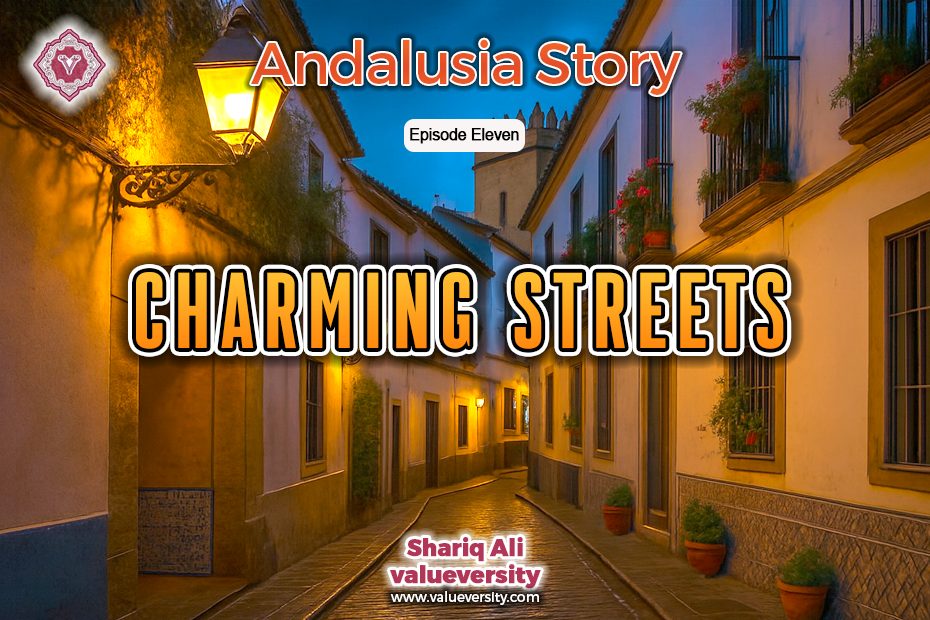Charming Streets – Andalusia Story, Episode 11
By Shariq Ali
Valueversity
It was almost eight o’clock at night when our coach, returning from Córdoba, entered the outskirts of Seville. Through the wide windows, the twinkling city lights and the smiling liveliness of its streets were clearly visible. When the coach stopped at one point, I seized the opportunity to ask the guide about a good halal restaurant in the city center.
Smiling, he replied:
“Fez, a Moroccan restaurant—you’ll definitely like it.”
The name instantly lifted my spirits—the thought of the cultural fragrance of Ghalib, Rumi, and Faiz, along with the expectation of delightful flavors.
A short while later, the coach stopped on a busy city avenue in front of a five-star hotel. A few passengers got off. The guide gestured in the direction of Fez. We said our farewells and, relying on Google Maps, began walking toward our destination. First, we passed through bustling markets, then emerged into quieter but enchanting inner streets, the pleasant night breeze accompanying us.
These narrow streets, colorful buildings, shaded balconies, and the affectionate atmosphere created a living tableau of cultural charm. They say such streets were made narrow to provide shade from the heat and to foster closeness among residents. Most buildings were painted white and decorated with beautiful tiles, reflecting a graceful blend of Islamic and Christian architecture.
Somewhere here, near the alleys surrounding the Alcázar Palace, Washington Irving (1783–1859) had once stayed. The American diplomat and author gained worldwide fame for his Tales of the Alhambra. During his time in Spain, he lived in the narrow yet charming Callejón del Agua in the Santa Cruz district—a lane still celebrated for its romantic air and historic allure. Through his writings, Irving immortalized the streets, fortresses, and Arab heritage of Andalusia, weaving Seville into Europe’s creative memory.
There was a strange sense of familiarity in these lanes—small houses on both sides, vines climbing stone walls, and tastefully decorated windows peeking out. Watching women walk confidently along the streets made it clear this was a city that offered complete safety to its residents.
At last, we arrived at Fez, named after a Moroccan city. Located in a central spot, the restaurant was tastefully decorated. Behind the counter, courteous staff and polite waiters tended to neatly arranged tables and chairs, leaving a warm first impression.
We chose a quiet corner. The air was fragrant—steam rising from traditional Moroccan clay pots carried the mixed aromas of saffron, cumin, and coriander, with a faint trace of cinnamon.
I ordered chicken tagine—a Moroccan dish slow-cooked in a clay pot with a conical lid. The meat was tender and flavorful, its lemony tang blending with the mild bitterness of olives to create a unique taste. Alongside came mildly sweet couscous garnished with raisins and almonds, fresh salad, and warm bread. Every bite was a different experience of flavor and aroma.
For dessert, we had baklava—layered pastry filled with pistachios and honey, made even more delicious with hot tea.
After dinner, we stepped back into Seville’s vibrant night. In the city center, brightly lit shops, musicians strumming Spanish tunes on guitars, and artists selling their paintings filled the scene. After strolling for a while, we took a taxi back to the hotel. The next day promised to be busy—we were set to watch a flamenco show, without which no trip to Seville or Andalusia would be complete.
… to be continued
